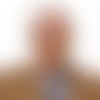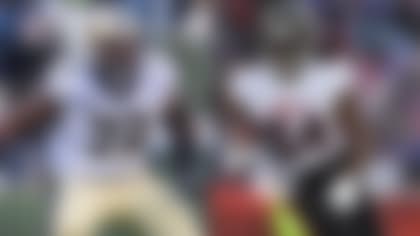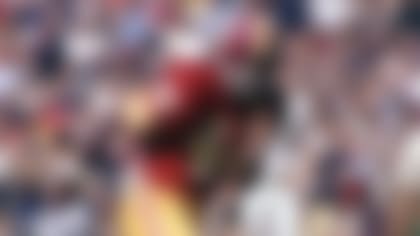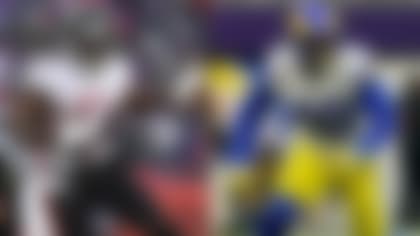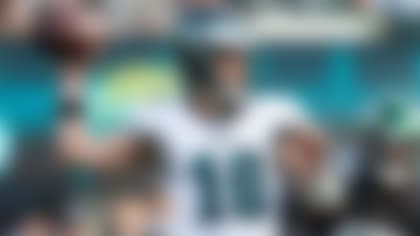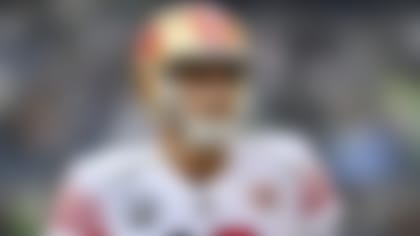With Super Bowl LV nearly upon us, Gil Brandt presents his unvarnished memories of previous Tampa Super Bowls:
On Feb. 7, Tampa will host the most important event on the NFL calendar for the fifth time -- and it'll look a lot different than the first time the Super Bowl was played in the city, nearly 40 years ago.
I'm not just talking about the realities of holding an event like this during the time of COVID-19. When Super Bowl XVIII was played between the Los Angeles Raiders and Washington on Jan. 22, 1984, both the game and the city existed on a smaller scale.
Notably, that first Tampa Super Bowl came after the conclusion of the Buccaneers' eighth season in existence. And I want to take this opportunity to call out the efforts of Tom McEwen, the former sportswriter and sports editor of The Tampa Tribune. McEwen, who passed away in 2011, was a great backer of Tampa. His name was very powerful, and he was instrumental in the city landing an NFL team in 1976. Unlike most writers or media people, McEwen was the kind of guy who got the job done -- he didn't just rely on somebody else to get the job done for him. Without him, Tampa likely never would have hosted that first Super Bowl.
Thinking about the game that's about to be played between the Kansas City Chiefs and Tampa Bay Buccaneers, I wanted to revisit my memories from each of the four Super Bowls, to trace the growth of both Tampa and this great event.
Super Bowl XVIII: Raiders 38, Washington 9
Tampa Stadium, Jan. 22, 1984
Back in those days, Super Bowls were not nearly the lavish productions they've become. The Commissioner's Party and other various pregame events were a little more, shall we say, low-key than they are now -- I think one of the parties I went to was held at an old church. And Tampa itself in 1984 was much less populous than it is today. Holding the Super Bowl there in 1984 was kind of like holding a heavyweight boxing match in a small Montana town. The game then did not have nearly the same kind of physical footprint it carries now. Busses were a hot commodity in terms of getting from the game to your hotel; I remember them bringing busses in from around the country to move everyone around.
It was just a highly unusual place to host the Super Bowl, which was typically played in a big city and a big stadium; Tampa was not a big city, and Tampa Stadium -- a.k.a. The Big Sombrero -- was not a big stadium. Compared to what we have today, it felt more like a bunch of orange crates thrown together. The city did a fantastic job, though -- that is without question. McEwen's efforts paid off and surely helped solidify Tampa's place both in the NFL landscape and as a growing American city, a sleepy golf mecca transforming into a hot-spot destination for Midwestern transplants.
As for the game itself, two things stand out. First is Marcus Allen's dazzling 74-yard touchdown run, on which he probably actually ran for something like 215 yards, thanks to all the zigging and zagging he did on the way to the end zone. The second is what transpired near the end of the first half, when Joe Theismann and Washington had the ball on their own 12-yard line.
There were two brothers, Jim and John Otten, who had worked for Raiders owner Al Davis for a long time, one in a personnel capacity and the other managing film. John was sitting with the Raiders coaches during the game, and they had taken a time out, and John volunteered a suggestion that would change the course of the game. John said that he'd seen this situation before, and previously, Washington had called a screen pass. Defensive coordinator Charlie Sumner took John for his word and prepped linebacker Jack Squirek for the screen. Lo and behold, Squirek picked off Theismann's pass, returning the ball for a touchdown and a 21-3 lead, helping lift the Raiders to their second Super Bowl win as a franchise.
Super Bowl XXV: Giants 20, Bills 19
Tampa Stadium, Jan. 27, 1991
In just seven years since Super Bowl XVIII, the Super Bowl had already grown significantly, transforming from something that many dismissed as a fad into a bona fide cultural event. I remember every owner in the NFL at the time, for example, attending this game, which I doubt was the case for Super Bowl XVIII. Tampa, also, had learned from its first experience as host city, and things ran much more smoothly than before. There was, of course, the added wrinkle of the Gulf War, which was ongoing at the time and had raised tensions around the game. Security was extremely heavy getting into the stadium.
The Giants got into town late, but that didn't stop them from securing the second Super Bowl win in franchise history. This was the Wide Right game, which ended with Bills kicker Scott Norwood's infamous missed field-goal attempt, but the showdown also featured a former Cowboy in a starring role for the winning team. Everson Walls, whom I'd signed as an undrafted rookie in 1981, had been scooped up by the Giants in 1990, and defensive coordinator Bill Belichick had turned Walls into a safety. Walls ended up making a touchdown-saving stop of Buffalo running back Thurman Thomas that Belichick called "the play of the game."
Super Bowl XXXV: Ravens 34, Giants 7
Raymond James Stadium, Jan. 28, 2001
This was the first Super Bowl to be played in Tampa since the late Malcolm Glazer -- whose family continues to own the team -- purchased the Buccaneers in 1995 for $192 million following former owner Hugh Culverhouse's passing. I was able to play a role in that moment in franchise history, serving as a consultant to help put everything together for the deal, and it was one of the most interesting things I've been involved in.
One other thing I think of when I reflect on Tampa is the Gasparilla Parade and Pirate Festival, which takes over the city -- and in 2001, the event was held at the same time as the Super Bowl.
And, of course, this was the first Super Bowl played in Raymond James Stadium, which was a huge leap from Tampa Stadium. Don't let the score fool you into thinking this Super Bowl was a snoozer. It's true that the game was not nearly as close as I remember people thinking it would be. But like every Tampa Super Bowl seems to, this one featured eye-popping moments, including a would-be Giants pick-six nullified by a holding penalty, back-to-back kick returns for touchdowns and a majestic 38-yard scoring strike to Brandon Stokley.
Super Bowl XLIII: Steelers 27, Cardinals 23
Raymond James Stadium, Feb. 1 2009
The difference between this and the first Super Bowl held in the city is astounding when I think about it. It was just night and day. The growth in the Buccaneers franchise from when Glazer bought it to 2009 was also remarkable.
When I contemplate what took place on the field, first I think of the last-minute game-winning touchdown pass to Santonio Holmes -- it was one of the most beautiful passes you'll ever see. I also think of Cardinals receiver Larry Fitzgerald, who supposedly couldn't run very fast, running away from everybody on a 64-yard scoring catch with less than 3 minutes remaining in the fourth quarter. Finally, I think of James Harrison's incredible 101-yard interception return -- accomplished with Harrison, who was freelancing on the play, out of defensive position.
Follow Gil Brandt on Twitter.
